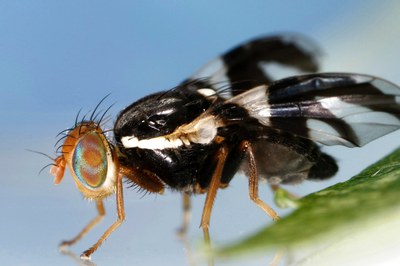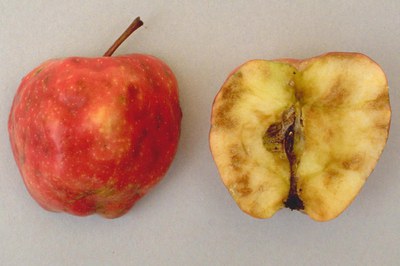Managing Apple Maggot Flies With Traps
The #1 apple pest is emerging now. Maggot flies are searching for apples to lay their eggs into. These eggs will hatch into tiny maggots that create tunnels inside fruits.


Should you spray your tree to protect the apples? Maybe, but only if the flies are there.
Monitor for the presence of maggot flies by hanging traps in the trees. These traps are red spheres coated with Tanglefoot, a sticky glue (see photo below). The flies are attracted to the red spheres, thinking they are a ripe apple to lay eggs inside—but then they get stuck.

These traps are available online and at major garden centers. Different models are available, including traps that come with sticky yellow boards and apple-scented lures.
You can make your own traps out of wooden balls (3 or more inches in diameter), painted red, with an eye screw and wire hook. Ripe apples from the store can be hung in the tree using clothes hangers. Coat the traps with Tanglefoot.
Hang 1–2 traps in small trees; 5 or more in large trees. Place traps facing a brushy area and/or on the south side of the tree.
The apple maggot fly is ¼-inch-long (slightly smaller than a housefly), with dark markings on its wings and a white spot where the thorax meets the striped abdomen.
If you find maggot flies in your traps, you should consider spraying the crop. Recommended pesticides include carbaryl, esfenvalerate or phosmet. Organic growers may consider spinosad. Continue spraying as long as maggot flies appear.
Written by Tom Kalb, Extension Horticulturist, North Dakota State University.
Source: MacKenzie, J. J. Hahn, and M. Grabowski. 2011. Pest management for the home apple orchard. University of Minnesota: Twin Cities.
Photos courtesy of Joseph Berger, Bugwood.org; H.J. Larsen, Bugwood.org; and The Jentsch Lab of Cornell University.
